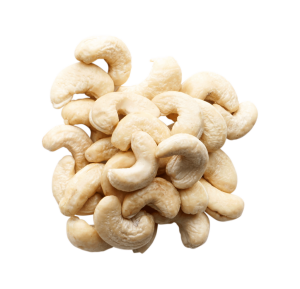Cashew is a major crop in several tropical countries. Its cultivation is mostly aimed to the production of cashew nuts, whereas its byproducts (including cashew tree gum and cashew apples) are underutilized. In this study, cashew tree gum (CG) has been combined to nanofibrillated bacterial cellulose (NFBC) produced from cashew apple juice, at different ratios (from CG-only to NFBC-only), to produce edible films. While the CG-only dispersion (at 1 wt%) behaved as a quasi-Newtonian fluid, the addition of NFBC provided a shear-thinning behavior, making the dispersions easier to process, especially to cast. Moreover, the films containing increasing NFBC contents exhibited better physico-mechanical performance. When compared to the CG-only film, the films containing at least 25% NFBC presented remarkably higher strength and modulus (even similar to some conventional petroleum-derived polymers), lower water vapor permeability (WVP), and lower water solubility, although at the expense of lower elongation and higher opacity values. The combined use of both polysaccharides was demonstrated to be useful to overcome the limitations of both CG-only films (very low viscosity, poor tensile properties and very high WVP) and NFBC-only films (very high viscosity, making the dispersions difficult to mix and spread). Moreover, the use of different NFBC/CG ratios allow properties to be tuned to meet specific demands for different food packaging or coating purposes.
